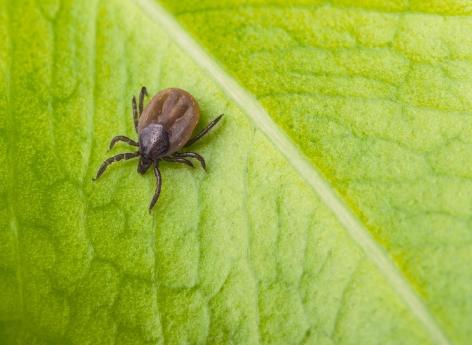
The Essential
- An antimicrobial can target Lyme disease by targeting the bacterium Borrelia burgdorferi at the source of the infection.
- This treatment is not harmful to animals, it allows the disease to spread in nature to be eradicated.
In 2015, 33,202 people were infected with Lyme in FranceMinistry of Solidarity and Health. This pathology – also known as Lyme borreliosis – is not contagious among humans. Humans can catch a bacterial tick if it is bitten. Borrelia burgundorferi. Sometimes the person may not have any symptoms as a result of the infection, but in some cases this sting can lead to degenerative disease with chronic arthritis, partial limb paralysis etc. However, with timely treatment, it can be controlled by taking antibiotics. The disadvantages of this radical proposal are small. First of all, they are broad spectrum, which means they kill a wide range of bacteria that are harmful to the good bacteria in our intestinal flora. On the other hand, their repeated use promotes antibiotic resistance. Finally, they can have side effects, such as diarrhea, sometimes for a long time.
New treatment with targeted action …
The new study, published in the journal CellResearchers have found a new treatment for Lyme disease. It is a targeted antimicrobial, so it can only kill the bacteria associated with Lyme disease. In addition, it does not harm animals or intestinal flora. Scientists hope that if this antimicrobial becomes widespread in nature, Lyme disease can be eradicated without adverse effects on the environment. “Well placed to eradicate Lyme disease, Says Kim Lewis, one of the study’s authors. We are preparing, the first field test will take place next summer”.
… Hygromycin A, a safe antimicrobial for animals
In detail, the researchers found that hygromycin A was produced by an antimicrobial Bacterium Streptomyces hygroscopicus, Was particularly active in the fight against bacteria Borrelia burgundorferi The cause of Lyme disease. To achieve this result, they fed the rats with traps containing hygromycin A. Results: Their infection with bacteria Borrelia burgundorferi Disappeared quickly! Scientists have therefore concluded that by keeping the same traps in nature, it is possible to eradicate Lyme disease from entire regions or entire countries. Another advantage of hygromycin A is that it is completely harmless to animals. “Even in high doses, hygromycin A does not show signs of toxicity, indicating that the compound is safe. “, Kim Lewis insisted.
Hygromycin A was discovered in 1953, but, until now, scientists have ignored it because it is ineffective against a large bacterial panel. And this is definitely of interest to the researchers of this study: since this antimicrobial has little effect on most other bacteria, it can be considered a targeted treatment. In other words, it is very effective in fighting Lyme disease, but without adverse effects on other bacteria in the body. On the other hand, the study also proved that it is bacterial Borrelia burgundorferi Failure to develop resistance to hygromycin A means that treatment is effective in the long term.
Research on this antimicrobial continues. The researchers sought permission to proceed to stage 3 of their clinical trial: to test hygromycin A in humans.





More Stories
Healing Streams Live Healing Services with Pastor Chris: Miracles Await this March 14th – 16th, 2025!
Essential Care for Hermann’s Tortoise: A Guide to Thriving Pets
Nail Decisions: Which is Better for You, Acrylic or Gel?